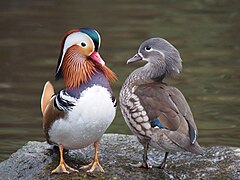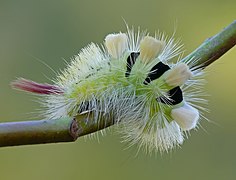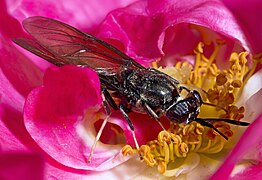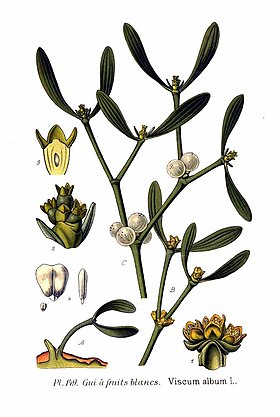Main Page: Difference between revisions
No edit summary |
m Reverted edit by The Master of Hedgehogs (talk) to last revision by Koavf Tag: Rollback |
||
| (218 intermediate revisions by 81 users not shown) | |||
| Line 1: | Line 1: | ||
__NOTOC__ __NOEDITSECTION__ |
|||
It's {{CURRENTYEAR}}]-{{CURRENTMONTH}}-[[{{CURRENTDAY}} : {{CURRENTTIME}} [[UTC]]<br>(in [[wikipedia:en:ISO 8601|ISO 8601]] format)<br></small> |
|||
[[Category:Wikispecies]] |
|||
<templatestyles src="MP/styles.css" /> |
|||
<!-------------------------Banner across top of page------------------------------> |
|||
<div class="main-banner main-box"> |
|||
<!------------"Welcome to Wikispecies" and article count---------------------------> |
|||
<div class="main-basics"> |
|||
<div class="main-welcome"> |
|||
== Taxonavigation == |
|||
<span style="font-size:170%">Welcome to<br /></span> |
|||
<span style="font-size:240%">[[Wikispecies:About|Wikispecies]]<br /></span> |
|||
<p>The free species directory that anyone can edit.</p> |
|||
</div> |
|||
<p>It covers [[Animalia]], [[Plantae]], [[Fungi]], [[Bacteria]], [[Archaea]], [[Protista]] and all other forms of life.</p> |
|||
[[Main Page]]<br> |
|||
<p>So far we have '''[[Special:Statistics|{{NUMBEROFARTICLES}}]]''' entries.</p> |
|||
Regnum: [[Archaea]] - [[Bacteria]] - [[Protista]] - [[Fungi]] - [[Plantae]] - [[Animalia]] ( - [[Regnum|Regnum template]]) |
|||
| ⚫ | |||
<p>You can also check us out on X (formerly known as Twitter): {{Twitter|Wikispecies}}<br>or use the <span class="plainlinks">[https://play.google.com/store/apps/details?id=org.kiwix.kiwixcustomwikispecies Android app]</span> sponsored by Wikimedia.</p> |
|||
</div><!-- /main-basics --> |
|||
== Welcome! == |
|||
<!------------------- Taxon Navigation on righthand side ----------------------> |
|||
<div class="main-taxon"> |
|||
<h2 style="color:green">Taxon Navigation</h2> |
|||
*Superregnum [[Archaea]] |
|||
*Superregnum [[Bacteria]] |
|||
*Superregnum [[Eukaryota]] |
|||
**Regnum [[Protista]] |
|||
**Regnum [[Fungi]] |
|||
**Regnum [[Plantae]] |
|||
**Regnum [[Animalia]] |
|||
*[[Virus]] (classification still unclear) |
|||
</div><!-- /main-taxon --> |
|||
</div><!-- /main-banner --> |
|||
<!--------------------------- The Picture Line --------------------------> |
|||
<div id="mf-mps" class="main-gallery"> |
|||
{{MP pictures}} |
|||
</div> |
|||
<!--------------------------- Explore Wikispecies --------------------------> |
|||
<div class="main-boxes"> |
|||
<div class="main-col"> |
|||
<div> |
|||
== Explore Wikispecies == |
|||
* '''[[Help:Contents|HELP Section]]''' – Detailed information on creating pages. |
|||
| ⚫ | |||
| ⚫ | |||
| ⚫ | |||
| ⚫ | |||
* '''[[Help:Image Guidelines|Image Guidelines]]''' – Our recommendation on where to upload illustrations |
|||
* '''[[Wikispecies:PR|Wikispecies PR]]''' – Help us by spreading the word of Wikispecies |
|||
</div> |
|||
<!------------- Collaboration with ZooKeys and PhytoKeys -------------------> |
|||
<div> |
|||
<h2 style="color:green"> |
|||
Collaboration with ZooKeys |
|||
</h2> |
|||
[[File:Zookeys logo.svg|150px|right]] |
|||
Wikispecies is a new project supported by the [http://wikimediafoundation.org/ Wikimedia Foundation] with a great potential. It is meant to become an open, free directory of species. This will cover [[:en:Animal|animalia]], [[:en:Plant|plantae]], [[:en:Fungus|fungi]], [[:en:Bacteria|bacteria]], [[:en:Archaea|archaea]], [[:en:Protists|protista]] and all other forms of life to the extent that our users allow us. |
|||
[[File:PhytoKeys Logo.svg|150px|right]] |
|||
A '''[[Wikispecies:Collaboration with ZooKeys and PhytoKeys|collaboration]]''' between Wikispecies and [https://zookeys.pensoft.net/ ZooKeys] has been announced. [https://phytokeys.pensoft.net/ PhytoKeys] also joined the collaboration in November 2010. Images of species from ZooKeys and PhytoKeys will be uploaded to [[commons:Main Page|Wikimedia Commons]] and used in Wikispecies. |
|||
| ⚫ | |||
</div> |
|||
If you have any questions about Wikispecies, please do not hesitate to contact us: |
|||
<!--------------------------- Distinguished author --------------------------> |
|||
<div id=mf-da> |
|||
==Distinguished author== |
|||
{{Template:Distinguished author 2019-08}} |
|||
</div> |
|||
</div><!-- /main-col --> |
|||
<!--------------------------- Species of the month --------------------------> |
|||
<div id="mf-sow" class="main-col main-species"> |
|||
<!--{{Species of the week}}-->{{Species of the month}} |
|||
</div> |
|||
</div><!-- /main-boxes --> |
|||
<!---------------------- Wikispecies in other languages -----------------------> |
|||
<div class="main-box"> |
|||
== Wikispecies in other languages == |
|||
{{languages}} |
|||
</div> |
|||
<!---------------------- Other Wiki Projects -----------------------> |
|||
bmm26(at)cam.ac.uk |
|||
<div class="main-box"> |
|||
{{Sisterprojects}} |
|||
Benedikt Mandl, Department of Zoology, Downing Street, CB2 3EJ Cambridge, United Kingdom |
|||
</div> |
|||
or sign up at the Wikispecies mailing list: |
|||
[http://mail.wikipedia.org/mailman/listinfo/wikispecies-l/ mailinglist] |
|||
| ⚫ | |||
| ⚫ | |||
| ⚫ | |||
| ⚫ | |||
==Why is WikiSpecies monolingual?== |
|||
It is a basic feature of all wiki projects to support availibility by providing information in many languages. Why does WikiSpecies not follow this principle? Simply because WikiSpecies follows a scientific approach. The language of Biology is English, with Latin rudiments in taxonomy. However, WikiSpecies should serve as a base for other wiki projects in many languages; but this will not include an encyclopedic approach to Biology, as this should be restricted to the WIKIPEDIA projects. Please keep this in mind - WikiSpecies is NOT a bioWikipedia. Feel encouraged to continue the discussion about the future approach of WikiSpecies on the village pump. |
|||
Latest revision as of 20:13, 16 April 2024
Explore Wikispecies
- HELP Section – Detailed information on creating pages.
- Taxonomy – Information on the Linnaean classification of species.
- Village Pump – Discuss the project.
- Done and To Do – See references to very detailed areas and defined future targets
- Wikispecies FAQ – Check replies to common concerns.
- Image Guidelines – Our recommendation on where to upload illustrations
- Wikispecies PR – Help us by spreading the word of Wikispecies
Collaboration with ZooKeys


A collaboration between Wikispecies and ZooKeys has been announced. PhytoKeys also joined the collaboration in November 2010. Images of species from ZooKeys and PhytoKeys will be uploaded to Wikimedia Commons and used in Wikispecies.
Distinguished author
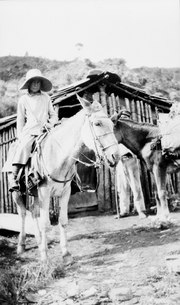
Mary Agnes Chase
1869–1963. Standard IPNI form: Chase
Mary Agnes Chase, née Merrill, was an American botanist who worked at the U.S. Department of Agriculture and the Smithsonian Institution. She is considered one of the world's outstanding agrostologists and is known for her work on the study of grasses, and also for her work as a suffragist. Chase was born in Iroquois County, Illinois and held no formal education beyond grammar school. That aside, she made significant contributions to the field of botany, authored over 70 scientific publications, and was conferred with an honorary doctorate in science from the University of Illinois. She specialized in the study of grasses and conducted extensive field work in North- as well as and South America. Her Smithsonian Field Books collection from 1897 to 1959 is archived in the Smithsonian Institution Archives.
In 1901, Chase became a botanical assistant at the Field Museum of Natural History under Charles Frederick Millspaugh, where her work was featured in two museum publications: Plantae Utowanae (1900) and Plantae Yucatanae (1904). Two years later, Chase joined the U.S. Department of Agriculture (USDA) as a botanical illustrator and eventually became a scientific assistant in systematic agrostology (1907), assistant botanist (1923), and associate botanist (1925), all under Albert Spear Hitchcock. Chase worked with Hitchcock for almost twenty years, collaborating closely and also publishing, for instance The North American Species of Panicum (1910).
Following Hitchcock's death in 1936, Chase succeeded him to become senior botanist in charge of systematic agrostology and custodian of the Section of Grasses, Division of Plants at the United States National Museum (USNM). Chase retired from the USDA in 1939, but continued her work as custodian of the USNM grass herbarium until her death in 1963. She was an Honorary Fellow of the Smithsonian Institution (1959) and Fellow of the Linnean Society of London (1961). Agnesia is named in her honour (a monotypic genus of herbaceous South American bamboo in the grass family).
Chase experienced discrimination based on her gender in the scientific field, for example, being excluded from expeditions to Panama in 1911 and 1912 because the expedition's benefactors feared the presence of women researchers would distract men. During World War I, Chase marched with Alice Paul and was jailed several times for her activities. In 1918, she was arrested at the Silent Sentinels rally picketing the White House; she refused bail and was held for 10 days, where she instigated a hunger-strike and was force-fed. The USDA accused her of "conduct unbecoming a government employee," but Hitchcock helped her keep her job. Chase was also an active member of the National Association for the Advancement of Colored People (NAACP).
See also: Distinguished authors of previous months.Species of the month
European Mistletoe
Some facts on this plant:
Distribution: Europe and western and southern Asia.
Leaves: Opposite, strap-shaped, 2–8 cm long.
Flowers: Yellowish-green, 2–3 mm across.
Fruit: White or yellow berry, usually with a single seed.
Medical uses: Used as a treatment for degenerative joint inflammation (osteoarthritis) and malignant tumors.
First described: By the Swedish naturalist Carolus Linnaeus in 1753.
Viscum album doesn't grow on the ground but on the branches or trunks of trees. It sends out roots that penetrate into the tree and take up nutrients. This shrub is a common holiday decoration in Europe. Sprigs of mistletoe were believed to protect the house from fire and lightning, and couples meeting under hanging mistletoe were obliged to kiss. The mistletoe was also important to the ancient Celts, who believed the plant to be an antidote for poison. Because it is a tree-parasite, the modern reputation of mistletoe has not been as favorable. However, ecological studies have shown that more new juniper trees sprout in areas with mistletoe, and that more berry-eating birds are attracted by the mistletoe's fruit, so that nearby berry-producing trees are more likely to have their seeds distributed. Currently at least six subspecies are recognized. They differ in fruit colour, leaf shape and size, and most obviously in the host trees utilised.
Source: Species-2023-06
Wikispecies in other languages
- Aceh
- Afrikaans
- Aragonés
- Ænglisc
- अंगिका
- العربية
- الدارجة
- অসমীয়া
- Asturianu
- Azərbaycanca
- Basa Bali
- Boarisch
- Беларуская
- Български
- بلوچی
- বাংলা
- Brezhoneg
- Bosanski
- Català
- Нохчийн
- Čeština
- Cymraeg
- Dansk
- Deutsch
- Zazaki
- Ελληνικά
- English
- Simple English
- Esperanto
- Español
- Eesti
- Euskara
- فارسی
- Suomi
- Føroyskt
- Français
- Nordfriisk
- Galego
- Ἑλληνική
- Alemannisch
- עברית
- हिन्दी
- Hrvatski
- Magyar
- Հայերեն
- Interlingua
- Bahasa Indonesia
- Íslenska
- Italiano
- 日本語
- Basa Jawa
- ქართული
- қазақша
- 한국어
- Ripoarisch/Kölsch
- Кыргызча
- Македонски
- молдовеняскэ
- मराठी
- Bahasa Melayu
- Mirandés
- မြန်မာဘာသာ
- Norsk bokmål
- Neadersassisk
- नेपाली
- Nederlands
- Nynorsk
- Occitan
- ଓଡ଼ିଆ
- Polski
- Português
- Runa Simi
- Română
- Русский
- ᱥᱟᱱᱛᱟᱲᱤ
- Sardu
- Sicilianu
- Scots
- සිංහල
- Slovenčina
- Slovenščina
- Српски
- Srpski
- Sunda
- Svenska
- ꠍꠤꠟꠐꠤ
- Ślōnski
- தமிழ்
- Тоҷикӣ
- ไทย
- Tagalog
- Türkçe
- ئۇيغۇرچە
- Українська
- Veneto
- Tiếng Việt
- Volapük
- ייִדיש
- 粵語
- 简体中文
- 繁體中文
Wikispecies is hosted by the non-profit Wikimedia Foundation, along with several other multilingual and free-content projects:
-
Meta-Wiki
Coordination of all
Wikimedia projects -
Wikipedia
The free encyclopedia -
Commons
Free media repository -
Wikibooks
Free textbooks and manuals -
Wikiquote
Free collection of quotations -
Wiktionary
Free dictionary and thesaurus -
Wikisource
The free library -
Wikinews
Free content news source -
Wikiversity
Free learning resources -
Wikidata
Free knowledge base -
Wikifunctions
Free software functions -
Wikivoyage
Free travel guide -
MediaWiki
Free wiki software
